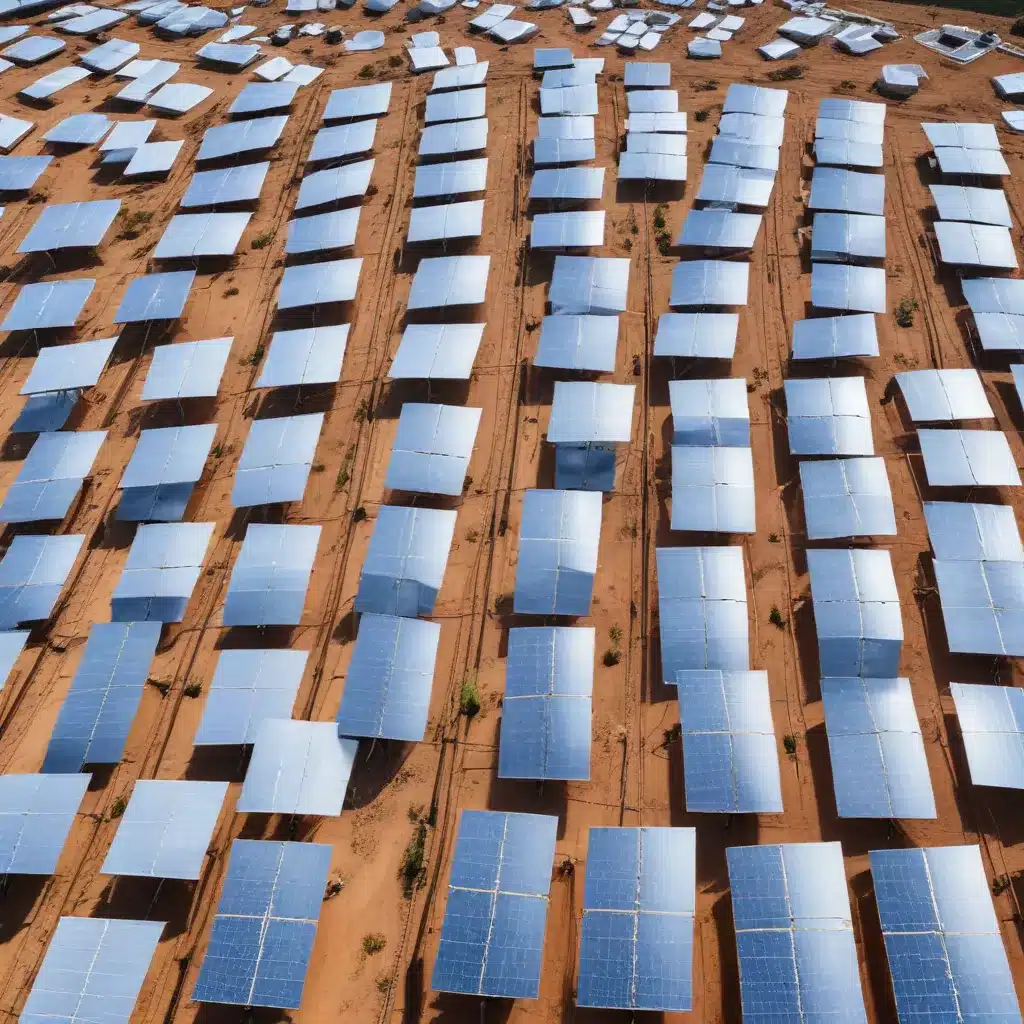
As Europe races to meet its ambitious climate goals, the energy sector is undergoing a transformative shift toward renewable sources like wind and solar. However, the inherent intermittency of these resources poses a significant challenge for grid operators tasked with maintaining a reliable and resilient power supply. Enter thermal energy storage (TES) – an innovative technology that is poised to play a pivotal role in this renewable energy revolution.
Thermal Energy Storage Technologies
Thermal energy storage encompasses a diverse array of systems designed to capture, store, and release thermal energy when needed. These technologies can be broadly categorized into three main types: sensible heat storage, latent heat storage, and thermochemical storage.
Sensible heat storage systems store thermal energy by heating a solid or liquid medium, such as molten salts, concrete, or water. When energy is required, the stored heat is extracted and converted into electricity or used directly for heating and cooling applications.
Latent heat storage, on the other hand, utilizes phase-change materials (PCMs) that undergo reversible phase transitions, typically between solid and liquid states, to store and release thermal energy. This approach can provide higher energy densities and more efficient heat transfer compared to sensible heat storage.
Finally, thermochemical storage relies on reversible chemical reactions to store and release thermal energy. These systems capitalize on the energy-dense nature of chemical bonds, offering the potential for higher storage capacities and longer-term storage durations.
Integration of Thermal Energy Storage with Renewable Energy
The integration of thermal energy storage with renewable energy sources, such as wind and solar, is a pivotal strategy for overcoming the challenges posed by their inherent intermittency. By decoupling energy generation from energy consumption, TES systems can help to stabilize the grid and enhance its flexibility.
Renewable Energy Intermittency
The variable and unpredictable nature of wind and solar energy generation can create imbalances between supply and demand, leading to fluctuations in grid frequency and voltage. These challenges can compromise the overall reliability and stability of the power system, potentially resulting in blackouts or other disruptive events.
Grid Stability Challenges
Maintaining grid stability in the face of renewable energy intermittency requires advanced strategies for load balancing, frequency regulation, and voltage control. Traditional approaches, such as ramping up and down conventional power plants, have proven to be increasingly inefficient and costly as the share of renewable energy continues to grow.
Role of Thermal Energy Storage
Thermal energy storage can play a crucial role in addressing these grid stability challenges. By storing excess energy generated during periods of high wind or solar production, TES systems can release this energy during times of high demand or low renewable generation, helping to smooth out fluctuations and maintain grid balance.
Enhancing Grid Flexibility
The integration of thermal energy storage with renewable energy sources can significantly enhance the flexibility of the power grid, enabling more effective integration of variable renewable generation and improving overall system resilience.
Energy Time-Shifting
One of the primary benefits of TES is its ability to “time-shift” energy, allowing energy generated during off-peak hours or periods of high renewable production to be stored and released during peak demand periods. This can help to reduce the need for costly peaking power plants and optimize the utilization of renewable energy resources.
Demand Response
Thermal energy storage can also play a crucial role in demand response programs, where energy consumers are incentivized to adjust their energy consumption patterns in response to grid conditions. By leveraging TES, consumers can shift their thermal energy needs (e.g., heating, cooling) to periods of high renewable generation or low grid stress, contributing to the overall stability and flexibility of the power system.
Peak Shaving
The strategic deployment of thermal energy storage can also facilitate peak shaving, the process of reducing the maximum power demand on the grid during periods of high consumption. By discharging stored thermal energy during peak hours, TES systems can help to flatten the load curve, reducing the need for expensive and carbon-intensive peaking power plants.
Economic and Environmental Benefits
The integration of thermal energy storage with renewable energy sources can provide a range of economic and environmental benefits, further bolstering the case for its widespread adoption across Europe.
Cost Savings
By enhancing the integration of renewable energy sources and improving grid flexibility, thermal energy storage can help to reduce the overall costs of electricity generation and transmission. This can lead to lower consumer electricity prices and more competitive energy markets.
Emissions Reduction
The deployment of thermal energy storage can also contribute to significant reductions in greenhouse gas emissions. By enabling a higher penetration of renewable energy sources and reducing the reliance on fossil fuel-based peaking power plants, TES systems can play a vital role in Europe’s decarbonization efforts.
Sustainability Improvements
Beyond the direct economic and environmental benefits, the integration of thermal energy storage with renewable energy can also contribute to broader sustainability objectives, such as improved energy security, reduced resource depletion, and increased resilience to the impacts of climate change.
As Europe continues its journey toward a clean energy future, the role of thermal energy storage will only become more crucial. By enhancing grid stability and flexibility, this innovative technology is poised to be a key enabler in the successful integration of renewable energy sources and the achievement of ambitious climate goals. To learn more about the latest developments in this field, visit the European Future Energy Forum – a leading platform for industry insights and collaboration.






